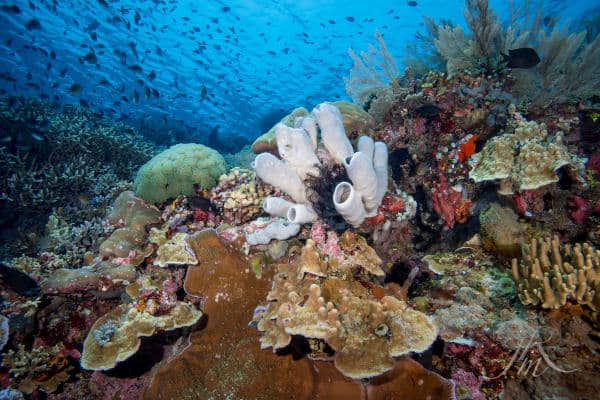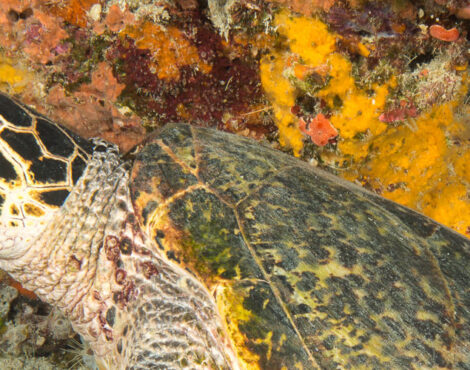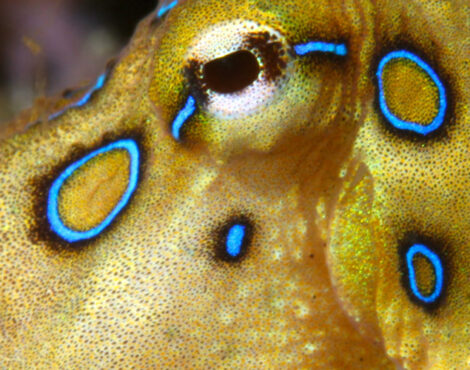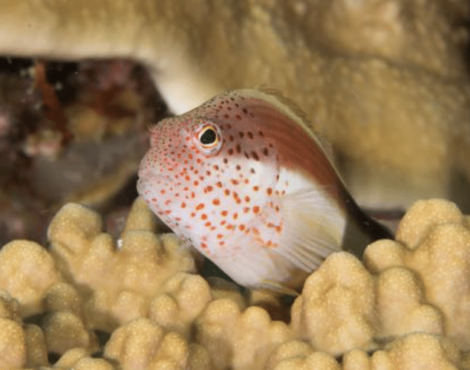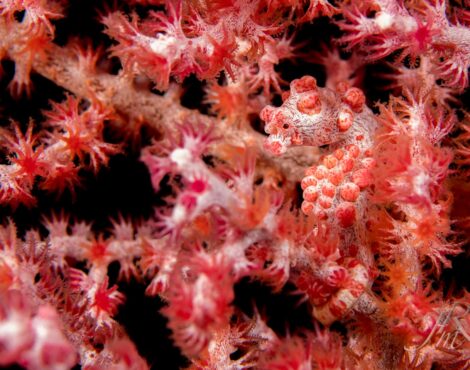What makes the reefs surrounding us at Siladen Resort and Spa, in the heart of Bunaken National Marine park, so incredibly special are the variety of healthy coral reefs.
When diving along the walls and over the reef tops, you canât help but be captivated by the beauty of the myriad types of soft and hard coral of all different colours and textures, lit by the bright Indonesian sunlight through the clear calm waters of the marine park.
The corals are an integral and vital part of the food chain. With healthy coral reefs comes an abundance of marine life.
A paradise for UW photography, the vibrant coral reefs make for spectacular vistas for wide angle photography, but are also home to some of the tiniest critters.
What are corals?
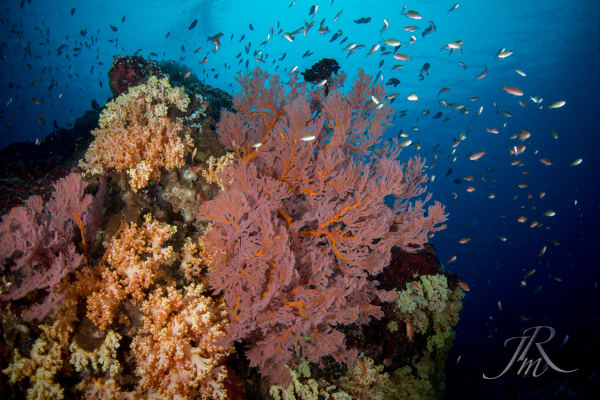
Corals are marine invertebrates within the class Anthozoa of the phylum Cnidaria. They are part of a large group of animals which include jellyfish and sea anemones.
They typically live in compact colonies of many identical individual polyps.
Coral species include Cnidarians which have cup shaped symmetrical bodies, a simple stomach with a single central orifice surrounded by stinging tentacles called cnidocytes which contain nematocysts.
There are two kinds of cnidarians, free swimming medusa and sessile polyps.
Hard and stony corals are classified as Scleractinian and only exist as sessile polyps. They are housed in a hard, calcium carbonate skeleton and each polyp has tentacles in multiples of six.
Scleractinian corals have highly variable growth forms.
What is a Coral Reef?
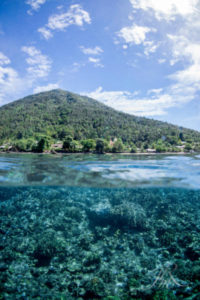
A coral reef is built mostly by Scleractinian corals. They are important reef builders that inhabit tropical oceans. It is very important to protect them to ensure a healthy ecosystem.
Genetically identical coral polyps settle on hard substrate and extract abundant calcium from the surrounding seawater which they use to create a hardened structure for protection and growth.
Coral reefs are created by millions of tiny polyps forming large carbonate structures. Each polyp excretes an exoskeleton near the base. Over many generations, the colony thus creates a skeleton characteristic of the species which can grow up to several meters in size.
Only the surface area of healthy coral reefs is living; areas of dead coral provide substrate for other organisms to settle. Complex skeletons of coral provide a habitat for all types of marine life, which are part of a complex food web and are interdependent on each other for survival.
Visible from space, coral reefs are the largest living structure on the planet.
What do Corals Eat?
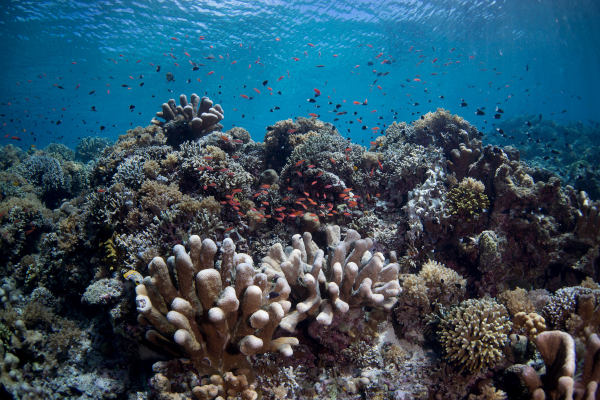
Coral polyps can obtain nutrition in three ways.
Most gather the majority of their energy and nutrients from the single celled algae called zooxanthellae, with which they form a symbiotic relationship. Corals provide protection, carbon dioxide and some nutrients for the algae, and the algae uses sunlight to photosynthesise, producing oxygen and sugars for the corals. The algae also give the corals their colours.
These corals need sunlight and clear shallow water at depths less than 60m. Bunaken has the ideal conditions for these corals to thrive.
The second way is by plankton capture using tentacles and/or mucus. During feeding, a coral polyp will extend its tentacles, which are covered in thousands of stinging cells, and wave them in the current. As small prey float or swim by they are stunned or killed by the stings. Their tentacles then pass the prey into the mouth. Usually they feed this way more actively at night.
The final way corals get their nutrition is by absorption of organic molecules from the water column.
How to Corals Reproduce?
Individual coral colonies grow by asexual reproduction of polyps. They also breed sexually by spawning, releasing gametes (eggs and sperm) simultaneously into the water column to spread offspring, usually overnight around a full moon at the same time each year. Fertilized eggs form a microscopic larva known as a planula, which are an early form of the coral polyp. They float near the surface where they drift and grow before descending, settling and attaching on a hard surface to begin a new colony.
How do Corals Grow?
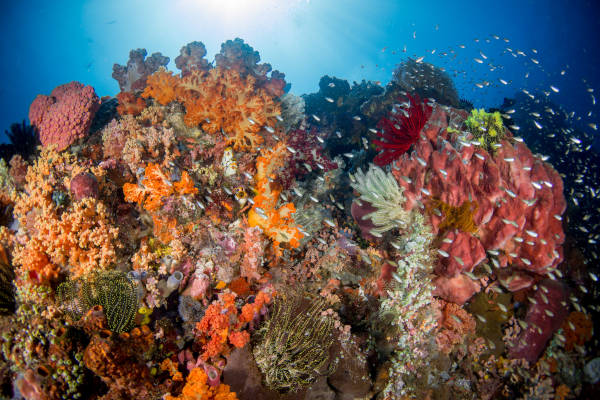
Coral polys secrete skeletons from the underside of their skin. The process of growing the skeleton consumes a lot of energy. Coral growth varies between less than a centimeter up to 10cm a year and is dependent on the species, age of the colony, morphology, location on the reef and environmental conditions. Massive corals are the slowest growing species, and branching or staghorn are the fastest.
How Important are Coral Reefs?
Healthy coral reefs are vital for the Earth. They provide habitats and shelter for many marine organisms, help protect coastal areas and shorelines from currents, waves and storms, are used in medicine to treat many illnesses, and provide a source of food and income for local populations. The fishing industry depends on corals because many fish spawn and juveniles grow on the reefs, moving out as adults to live in the open ocean. Healthy and vibrant coral reefs are important in the tourism industry for social, cultural and recreational activities.
Coral Reefs in Bunaken National Marine Park
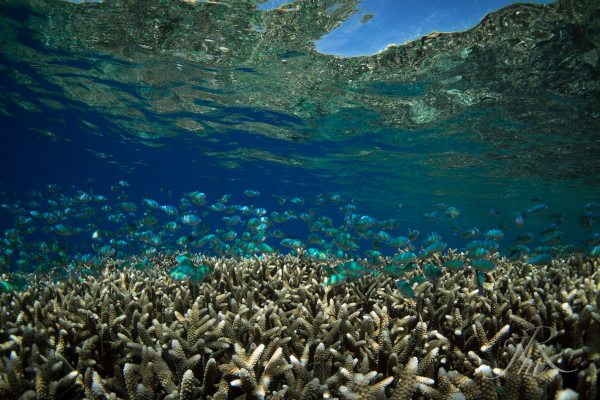
We are located near the center of the Coral triangle, which has mainly fringing reefs, and a few barrier reefs. With 390 species of coral and 2000 species of fish, it is claimed our park has seven times more coral than Hawaii, and more than 70% of all the known fish species of the Indo-Western pacific.
Fringing reefs grow along the shoreline in warm, shallow water and are relatively young compared to barrier reefs.
The flat reef top, with patch reefs and seagrass, may emerge from the water at low tide.
A very good example of a fringing reef is our very own house reef at Siladen Island.
Protection of Corals in Bunaken and Around Siladen Island
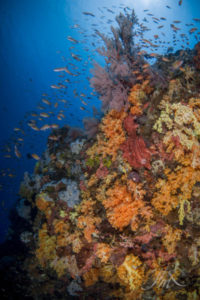
Although Bunaken is a patrolled national marine park, there are still many threats of illegal fishing. Not everyone respects the rules, but many resorts, including us, as well as locals in the area, have joined NSWA (North Sulawesi Watersports Association) to help protect it. More interesting information on our sustainability efforts can be found here.
We have been fighting for many years, to help reduce damage and keep the reefs healthy, by eco-managing waste disposal, preventing Crown of Thorns invasions, supporting local economy to discourage illegal fishing, organizing marine presentations for locals, especially children on the island, and regularly organizing beach and reef clean-up. For World Ocean Day, the âClean Our Oceanâ event , was organized. We had a great community day cleaning the beach around the island.
We at Siladen Resort & Spa care strongly about the healthy and vibrant coral reefs surrounding us, one reason we are regularly voted the best dive resort in Indonesia.
Written by Lisa Collins
Photos by Miguel Ribeiro

